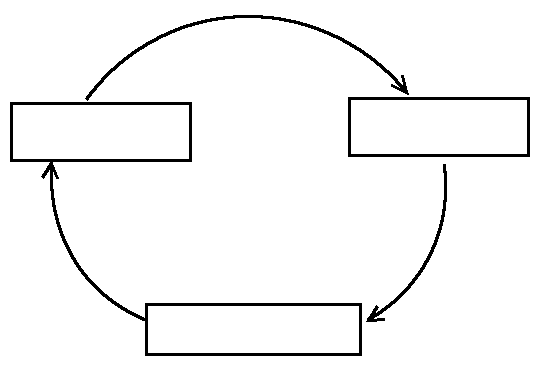Early Models of the Universe
Foreword: Today we tend to snicker at ancient models of the
universe. "What a bunch of clowns." Geocentric universe - right!
NOT!! OK, today we know better. However, while early models
of the universe may be wrong, many were scientifically sound given the
facts that were known at the time. At least in my own case I
would not presume that I am more intelligent than were Aristotle and Ptolemy.
We know more astronomical facts. We have better and more varied observational
tools. We have the benefit of hindsight (which is always 20-20, or
better!). So, why study models that are wrong? There are many
answers to that question involving cultural heritage (Western), the evolution
of scientific thought, our place in the Universe, etc... Let's do
it!
Who Was the First Astronomer?
The first astronomers are lost in pre-history. However, it is
clear that ancient civilizations world-wide were very aware of the heavens
and the motions of objects in it. We know this from artifacts that
still exist all over the world that were built to keep track of the heavens,
e.g.
The average ancient was undoubtedly far more aware of the heavens
than we are today. They had no light pollution and their lives
depended upon knowledge of the changing patterns in the sky. Why?
Although we know that all ancient cultures observed and tracked the
heavens, we have no knowledge of ancient Models of the Universe until
the early Greeks began making records that survived their passing.
Aside: What do we mean by Model of the Universe ?
In fact, what do we mean by the word "Model". This word can have several
meanings . . . e.g.
"Scientific Method"

Note:
-
If any fact is not consistent with the model,
-
If there is a choice between two models, then
Ancient Model of the Universe . . . A Guess
When prehistoric people studied the heavens, they, like us, had to notice
several facts:
-
The stars appeared in patterns
-
The patterns of stars never changed
-
The paths of the Sun and the Moon through the stars
Based on these facts, a plausible ancient model of the Universe
was not too different from the Celestial Sphere:
The Problem of the Planets
Very careful observations of the sky showed ancient astronomers that
there were five "stars" that did not stay put, but instead wandered
through the constellations. Later, the Greeks would name these objects
"Planets",
the Greek word for wanderer.
What is meant by "Wandering"
Sometimes a planet would do this:
There was no place for these planets in the simple prehistoric model
of the Universe . . . the model could not explain their motion; therefore
the model must be discarded or changed. The problem of the Planets would
remain the central problem of astronomy (and indeed physics) for several
thousand years until the time of Newton.
The Astronomy of the Greeks
Although there were many ideas regarding the structure of the Universe
that came out of the Greek era (even a heliocentric model by Aristarchus),
it was the model of Aristotle, later modified by Ptolemy, that would become
accepted and regarded as correct for some 1500 years.
Geocentric Model of Aristotle (c. 350 B.C.)
-
This model places the Earth at the center of the Universe, and the heavens
are composed of eight concentric spheres that independently (at slightly
different speeds) rotate around the Earth.
-
This gives the Prograde Motion of the Planets:
Modifications of Ptolemy (c. 140 A.D.)
-
To explain Retrograde Motion of the Planets, Ptolemy invented the Epicycle.
How does an Epicycle explain Retrograde Motion?
-
The Ptolemaic Model gave fairly accurate predictions of planetary
motion, and it was later accepted by the Church, and thus was THE Model
of the Universe for more than a thousand years. In fact, when Harvard
University opened in Boston in the seventeenth century, the Ptolemaic Model
was taught in the natural philosophy classes!
-
However, as observations of the locations of the planets got better
and better, the Model had to modified (e.g. more epicycles had to be added
and the Earth had to be moved slightly from the center); the model got
more and more complicated.
Copernican Revolution (c. 1543)
After his death, Nicolas Copernicus' (Polish Cleric) Model of the Universe
was published. His motivation was not based on any observations that showed
the Ptolemaic Model incorrect; instead, he believed that his
Heliocentric
Model accounted for the motion of the planets in a much simpler manner.
According to Copernicus:
What about Retrograde Motion?
Even though the Copernican Model is far simpler than the Ptolemaic
Model, it gave no better predictions of planetary motion. . . . Why?
Proof of the Copernican Model
In 1609, the Italian Galileo Galilei built a telescope and became the
first astronomer to use the it for observations. Among the many observations
that he reported, two prove that Copernicus was right:
-
Phases of Venus
-
Moons of Jupiter
-
Yes, Galileo's support of Copernicus got him into BIG trouble with the
Church. He was held under house arrest and forced to publicly recant his
Heliocentric ideas ("and yet it moves"). In 1992 (yes, nineteen ninety-two),
after some review, the Church decided that Galileo was right after all!
An apology was issued and Galileo was "rehabilitated."
This document was last modified on Tuesday, 18-Jan-2000 13:32:30 EST
and has been accessed [an error occurred while processing this directive] times.
Send comments or suggestions to:
marcumsd@muohio.edu
|

